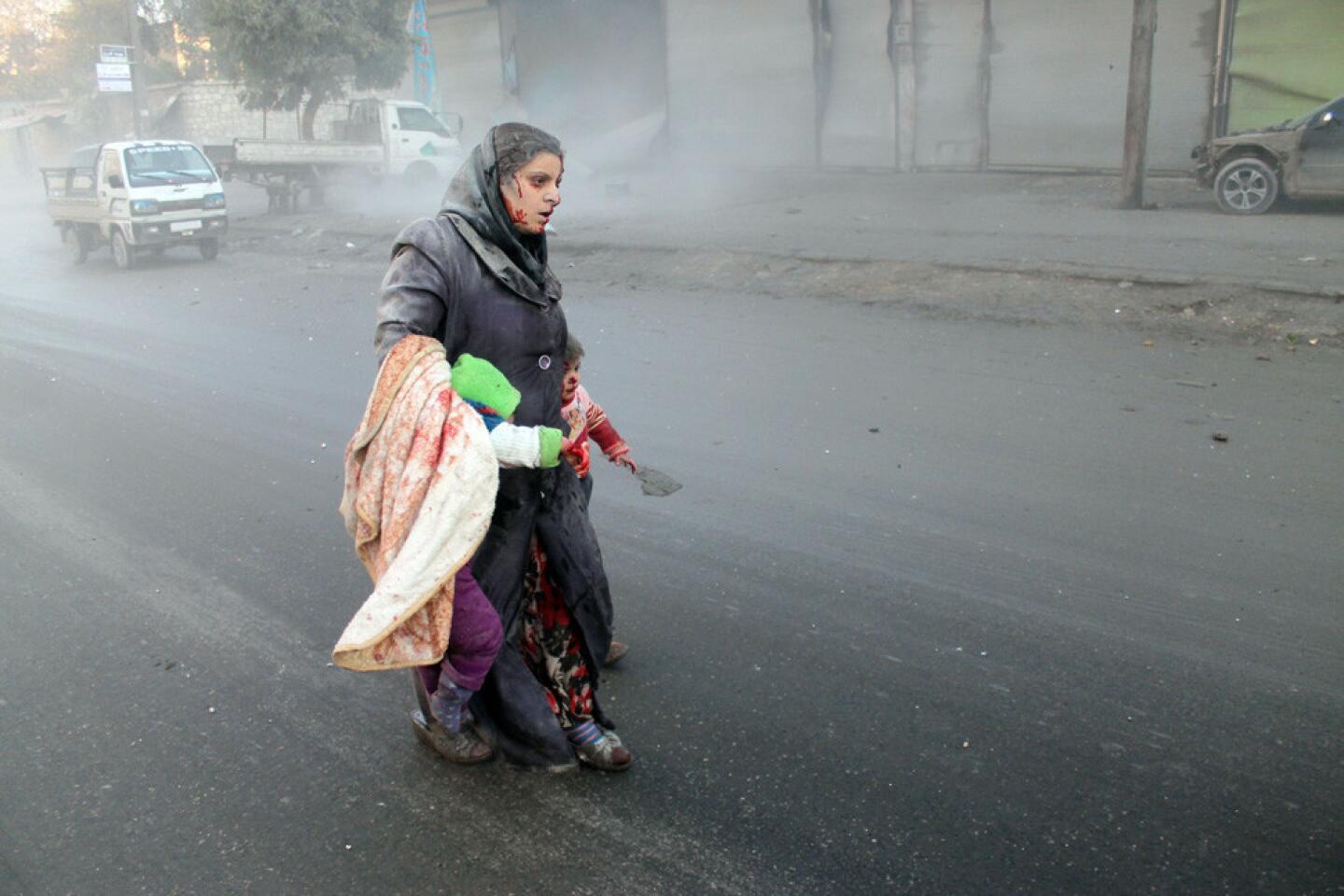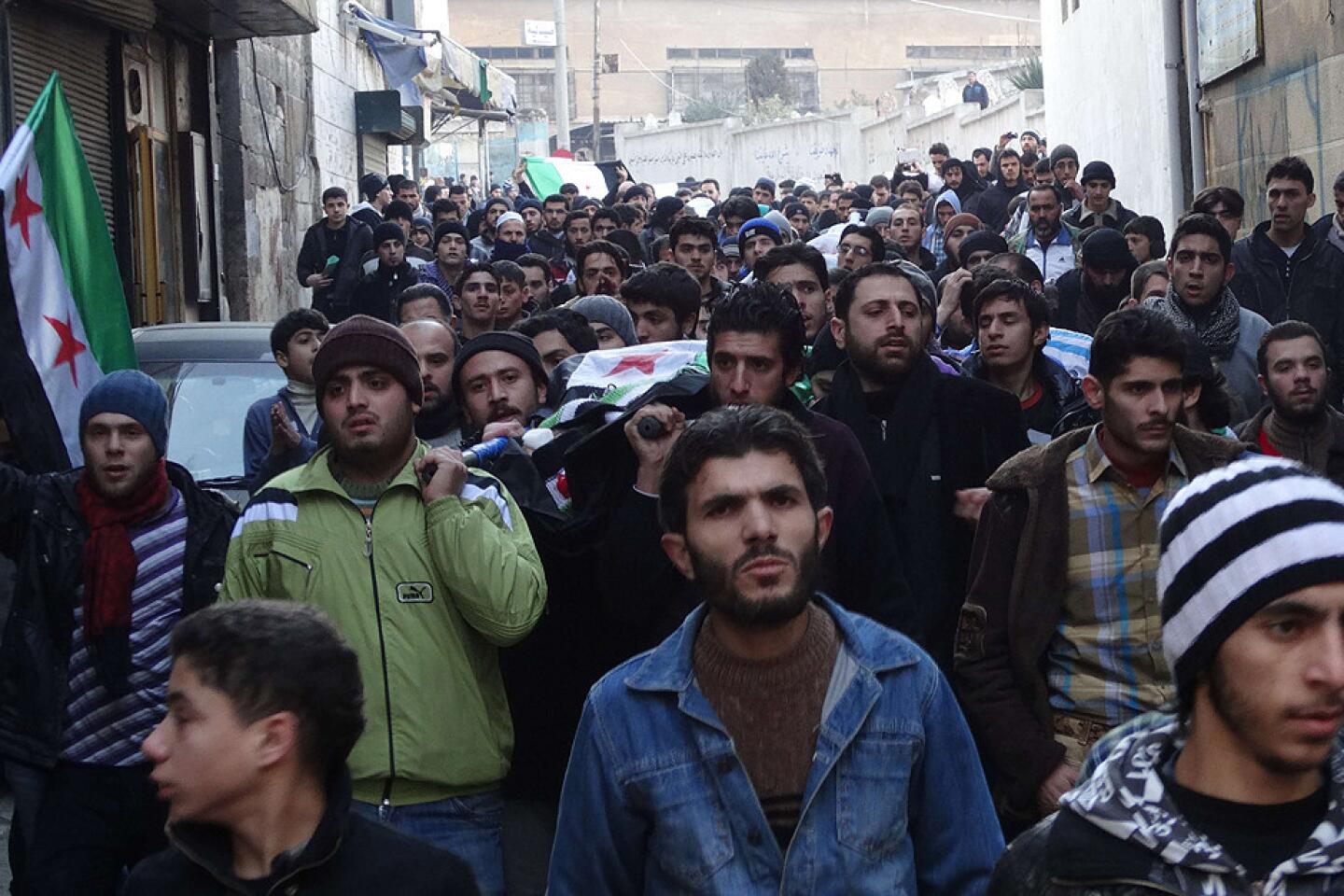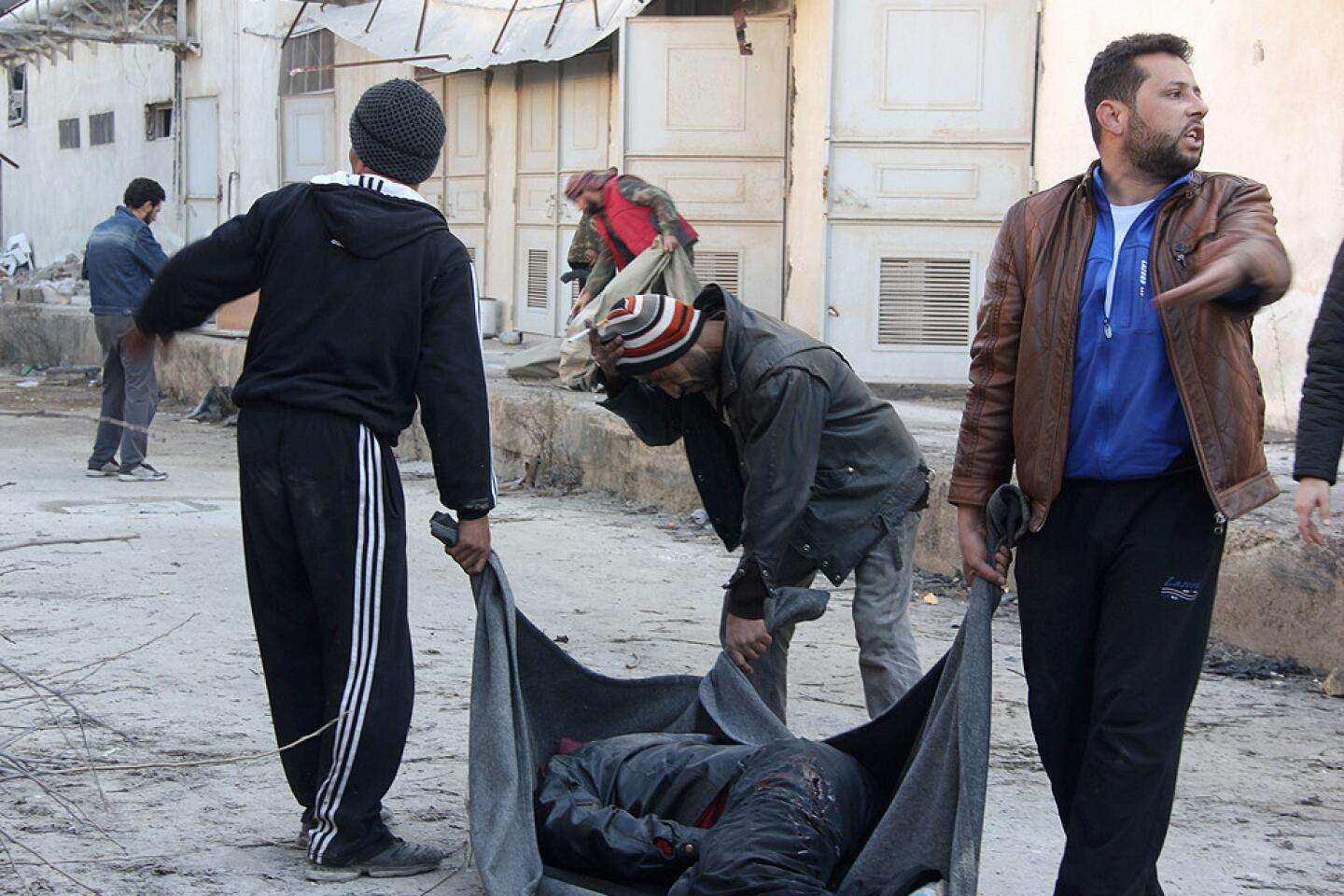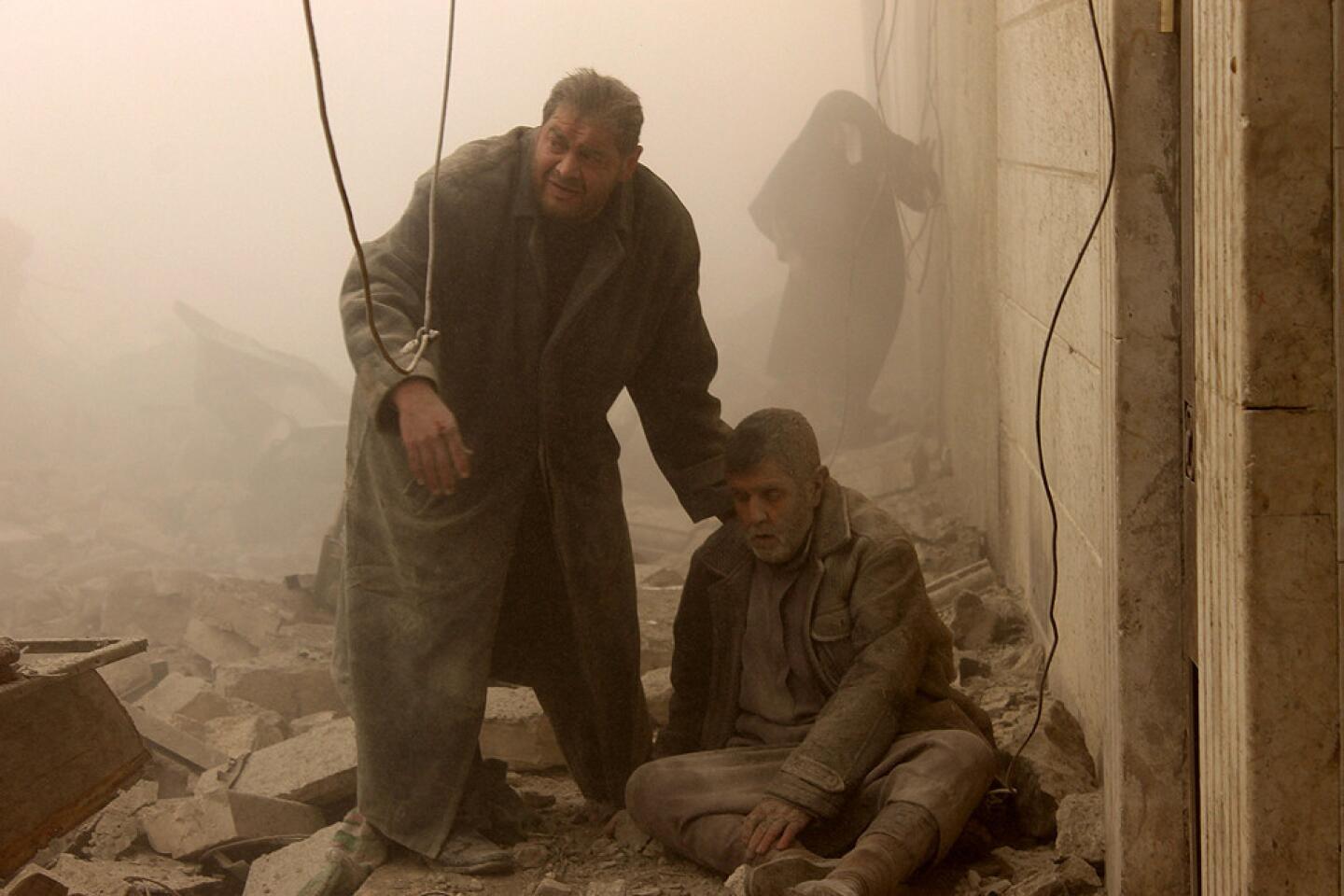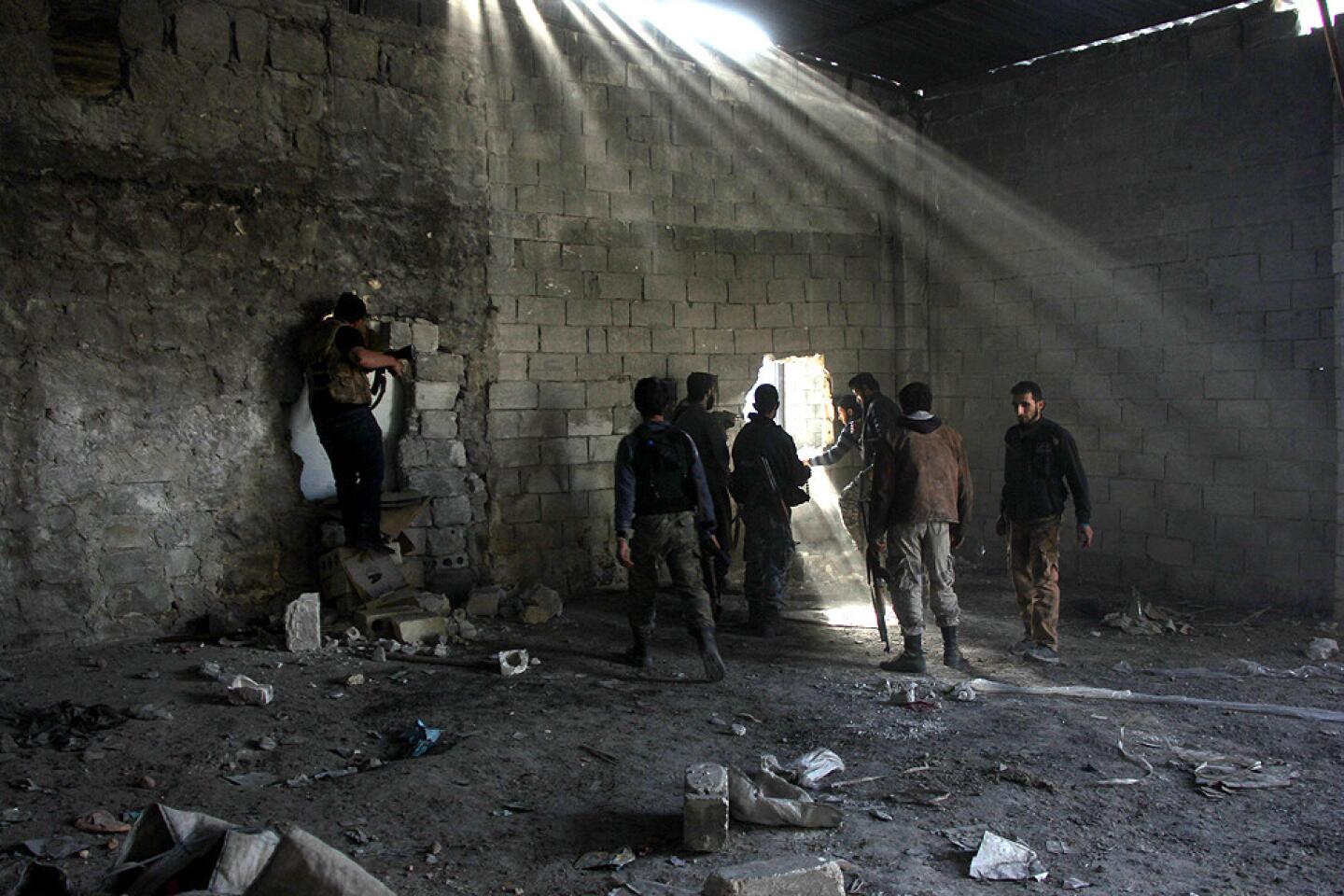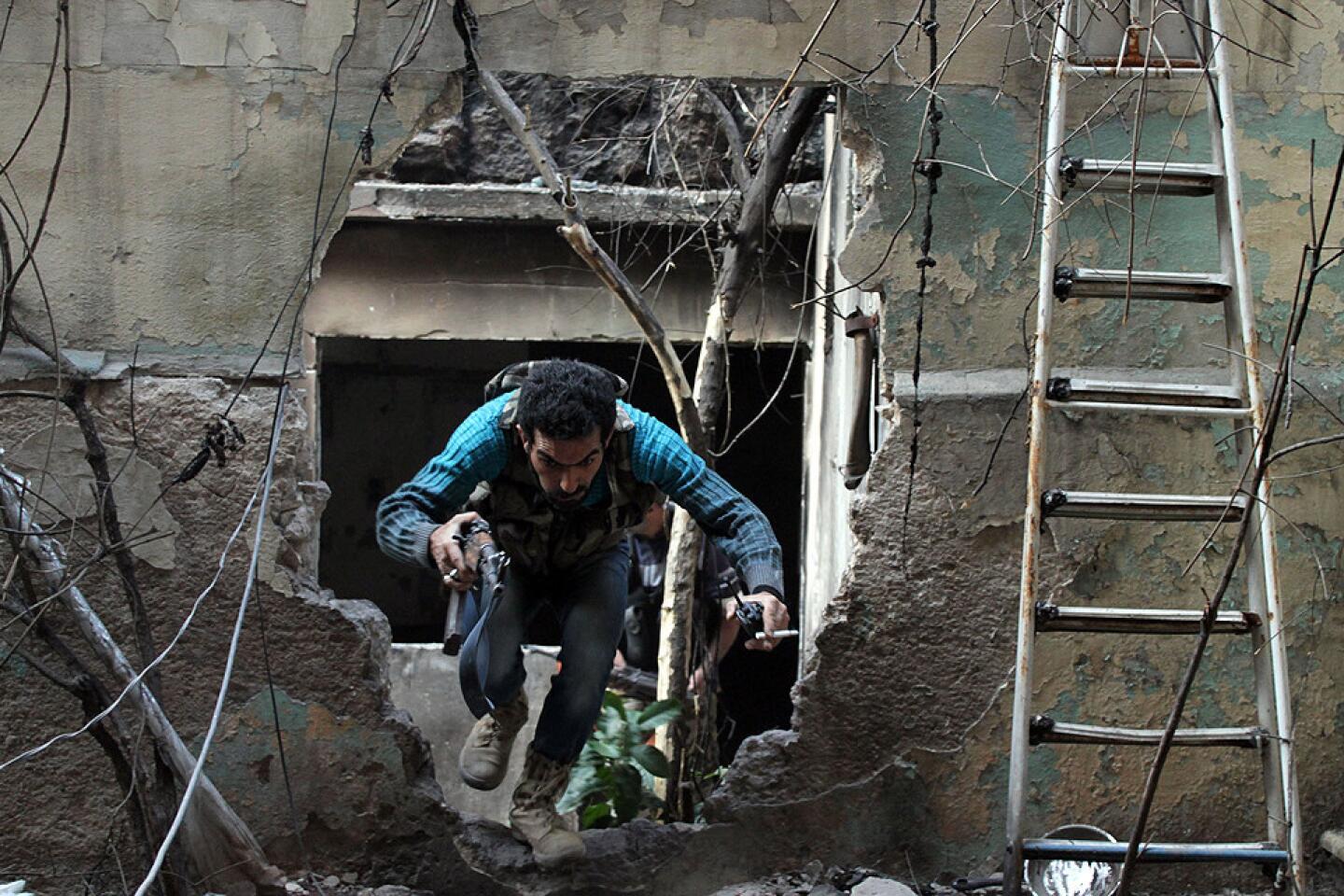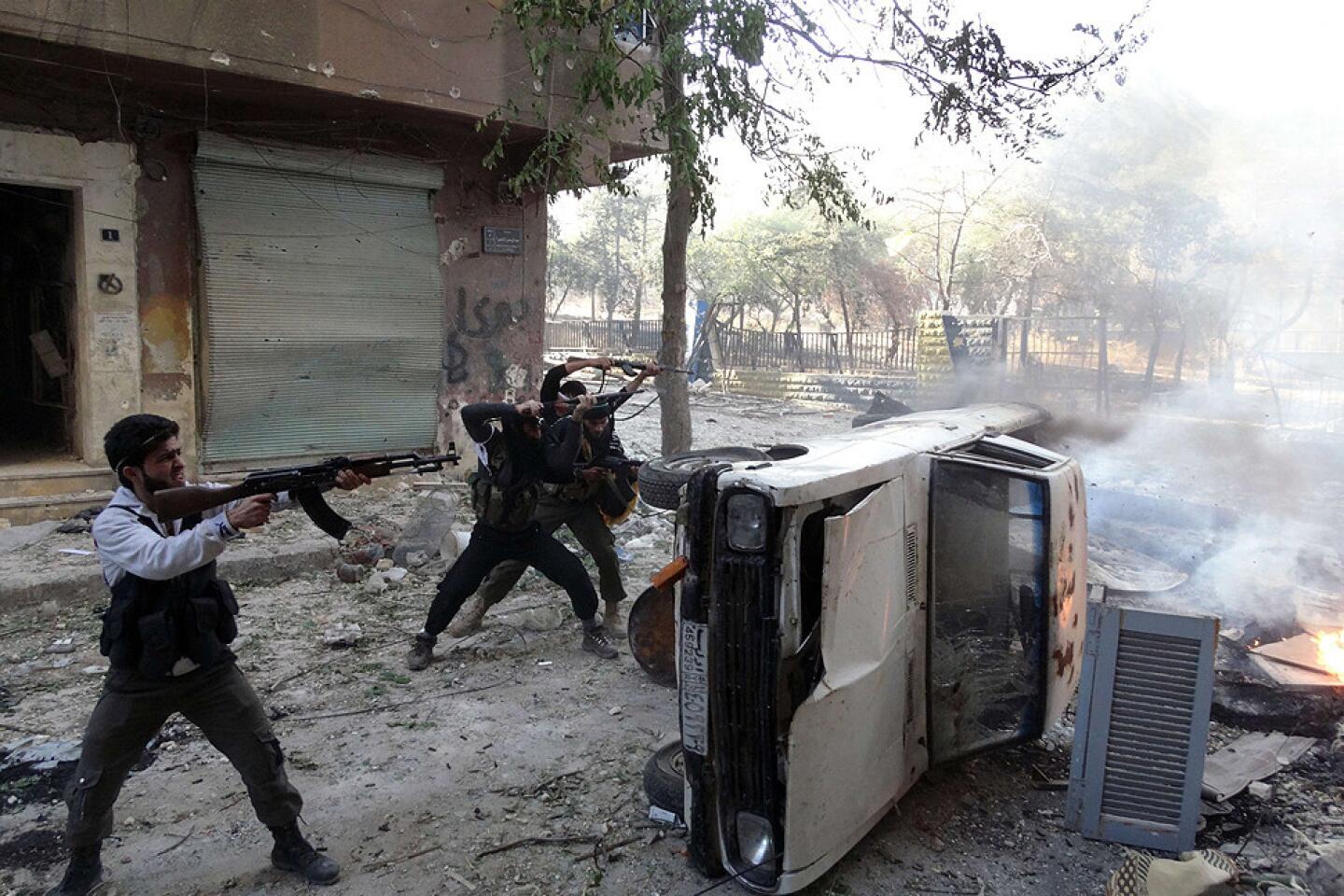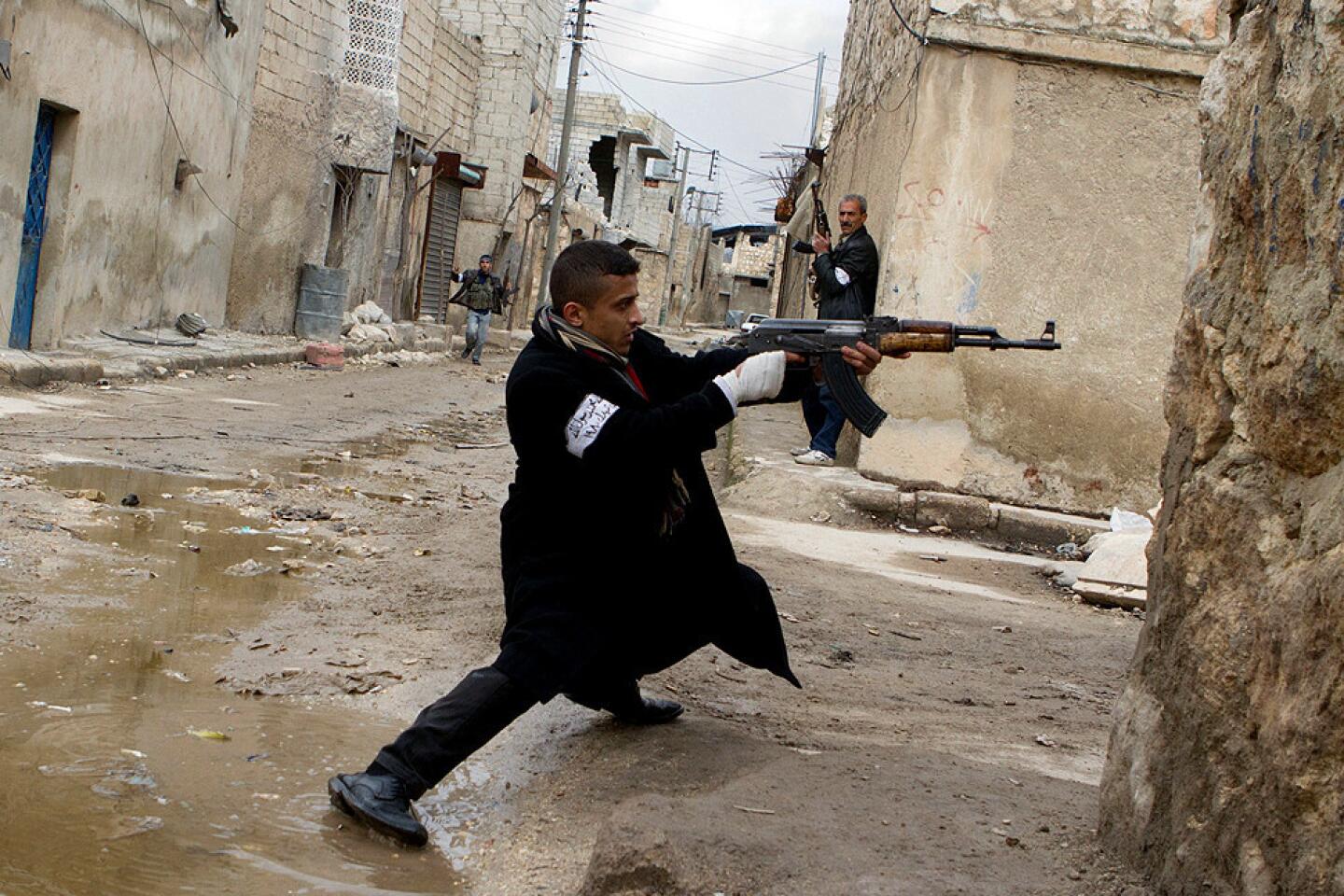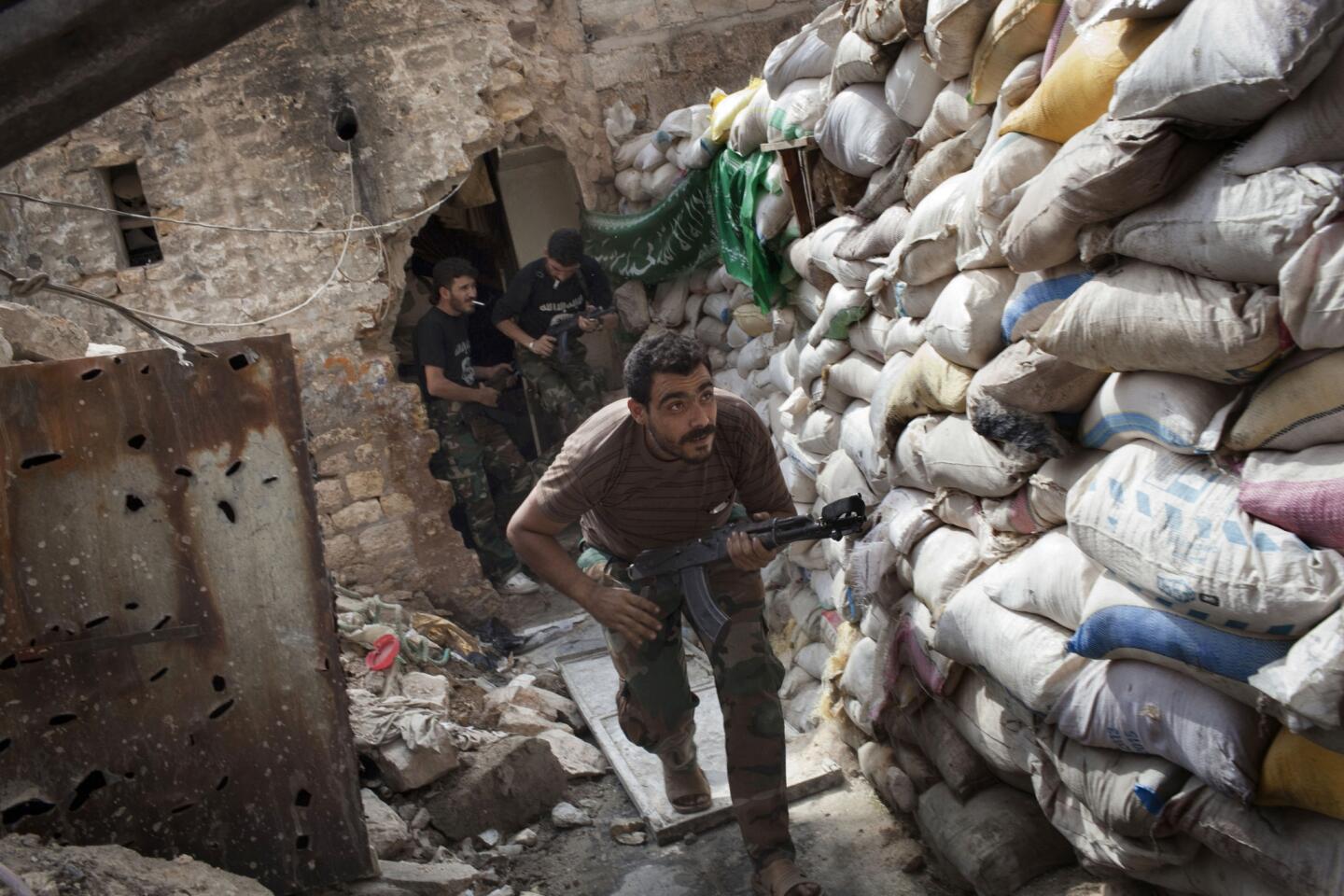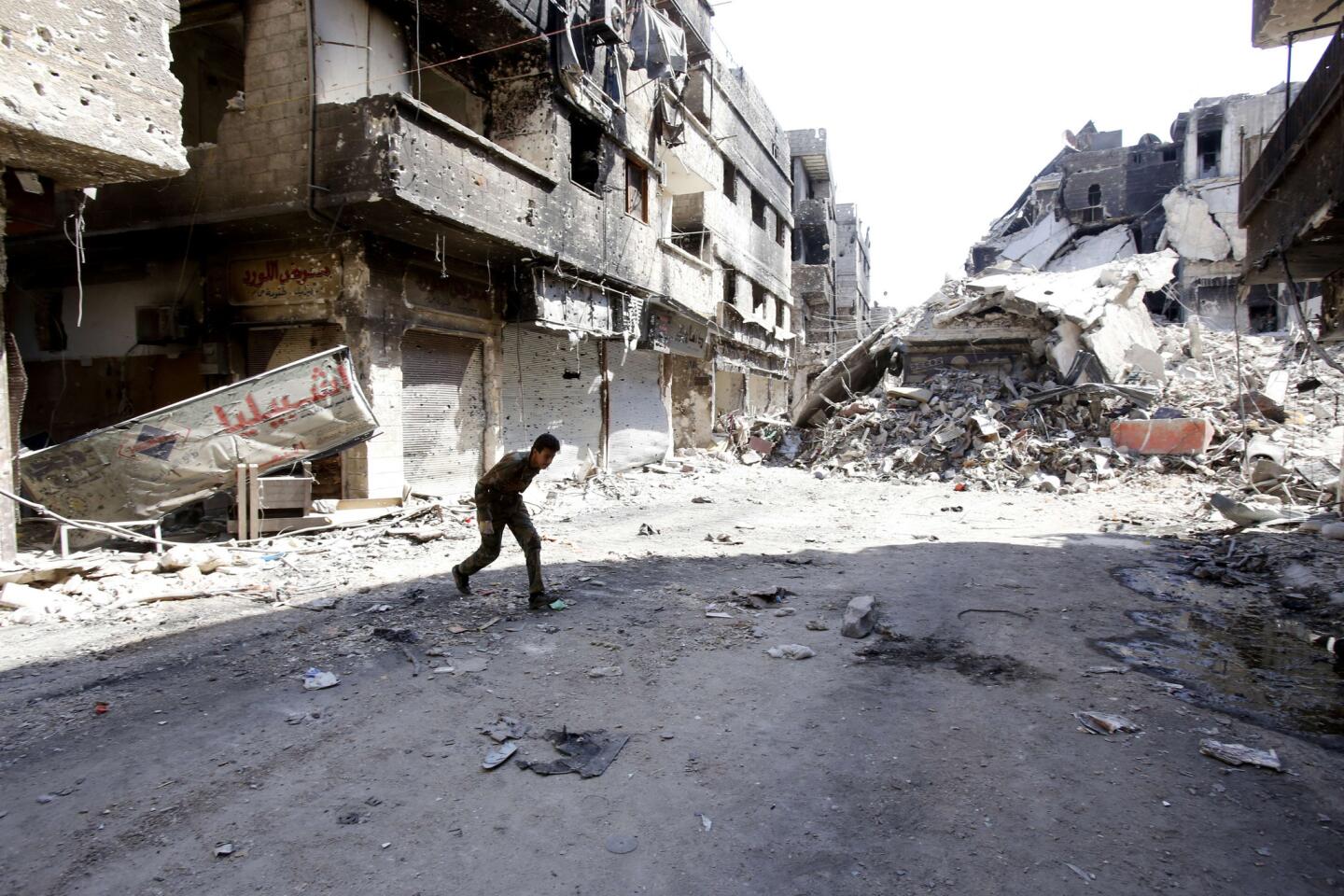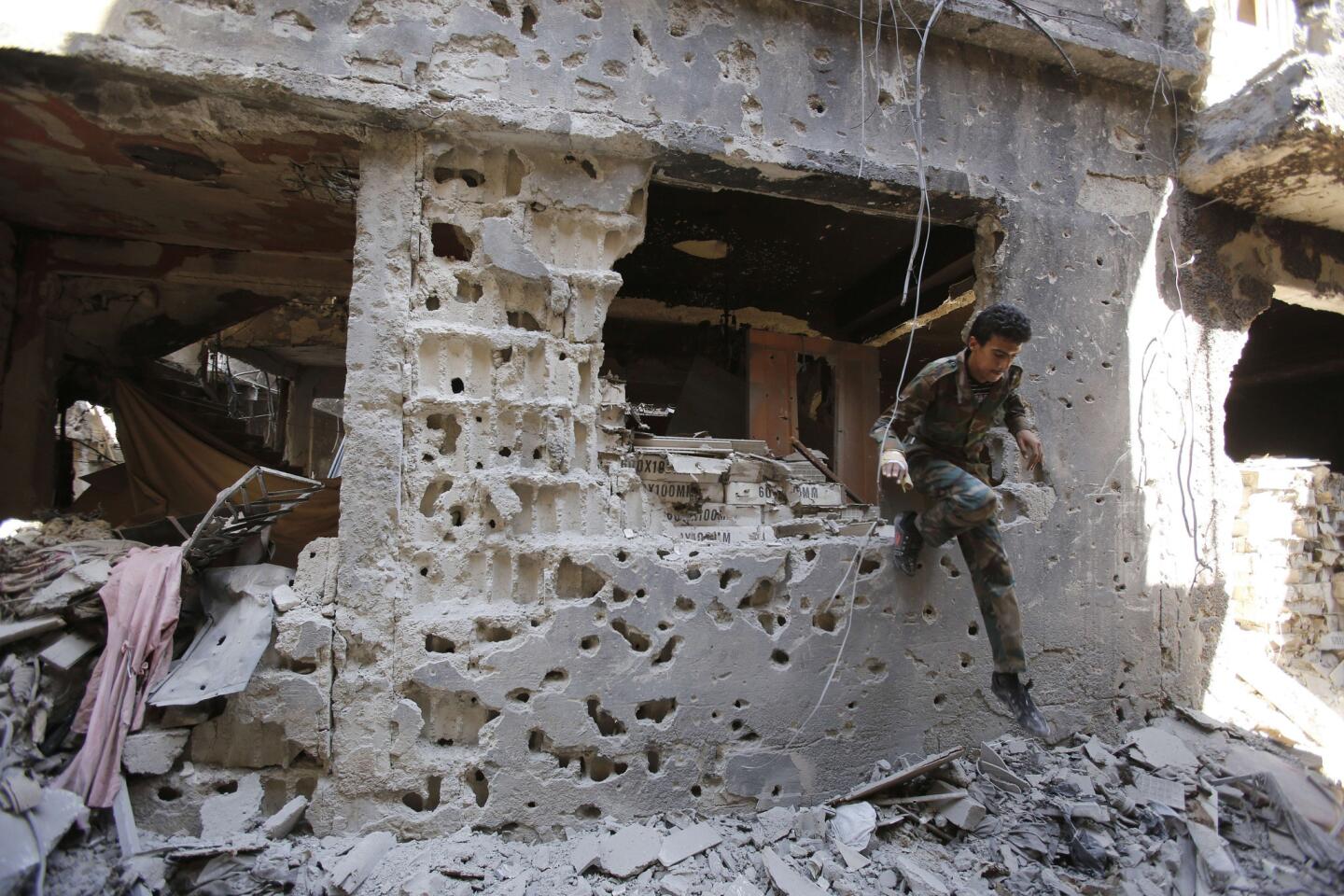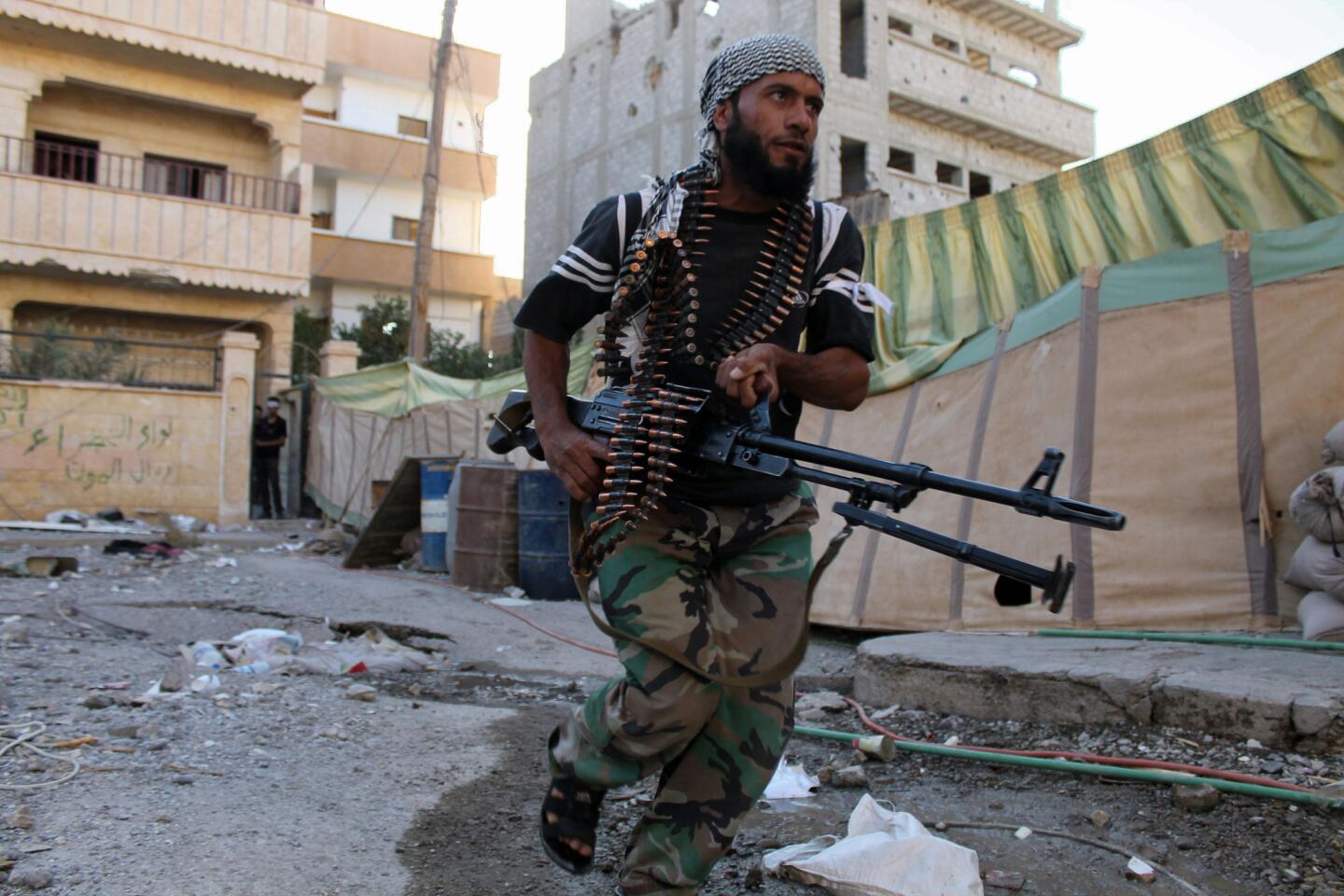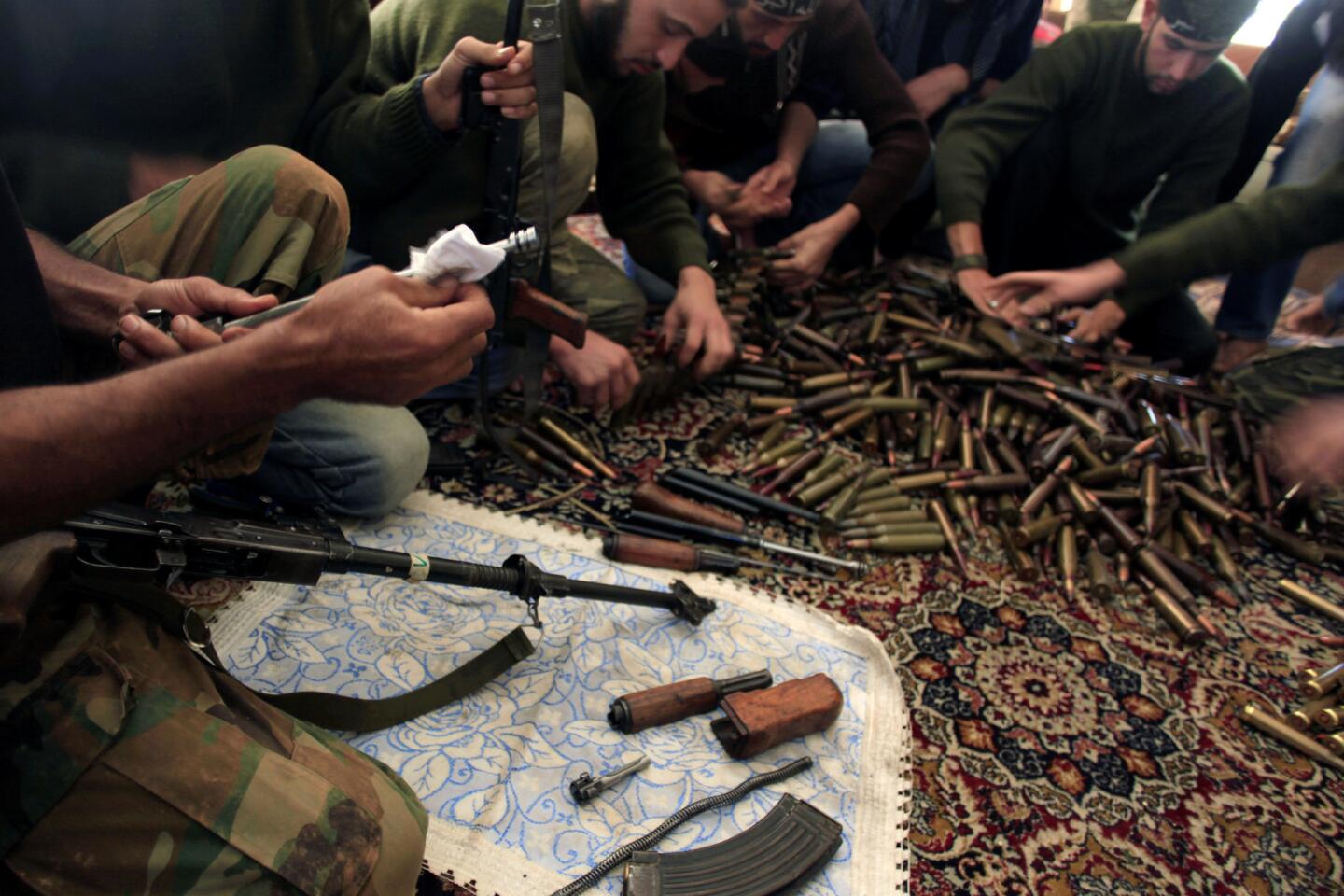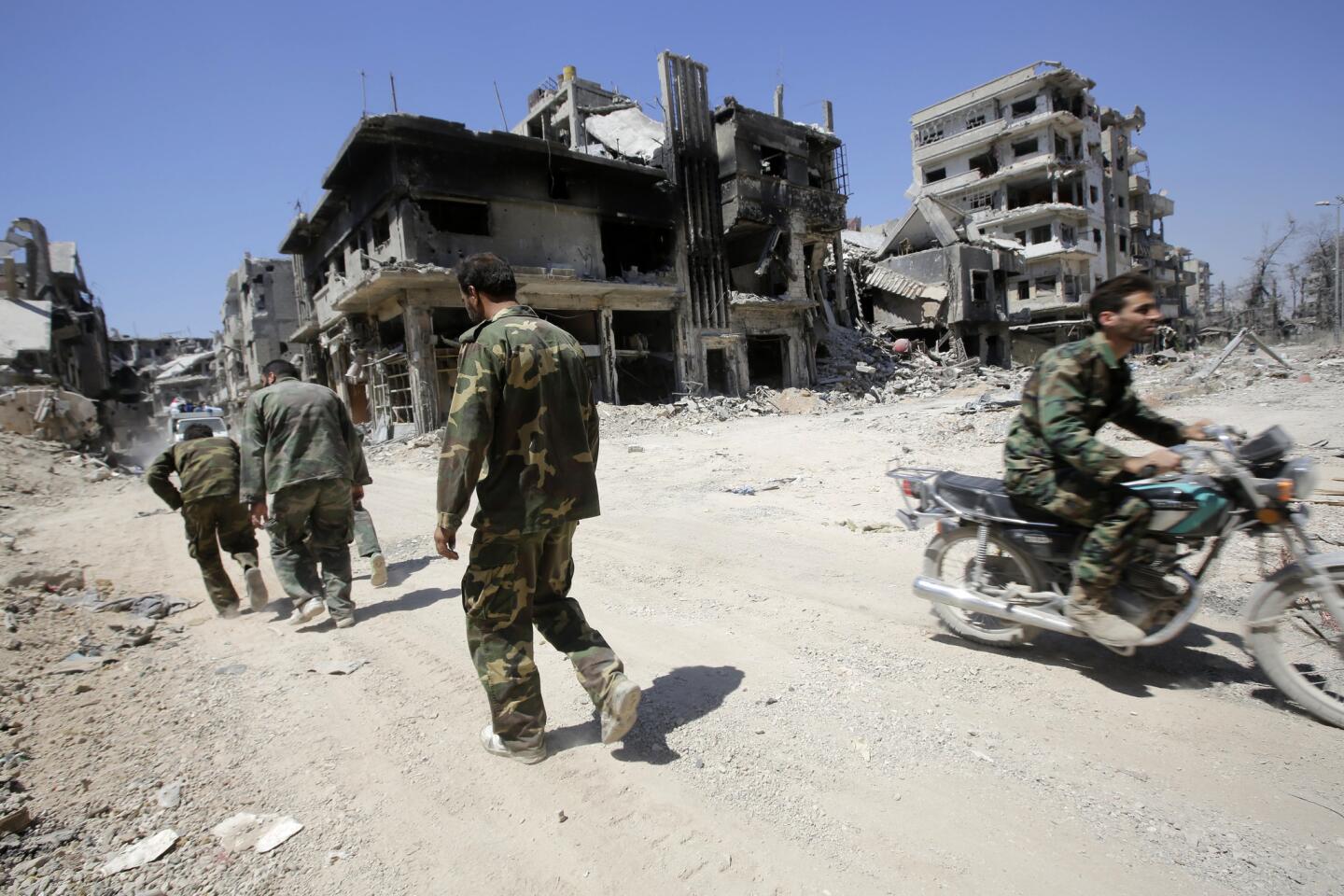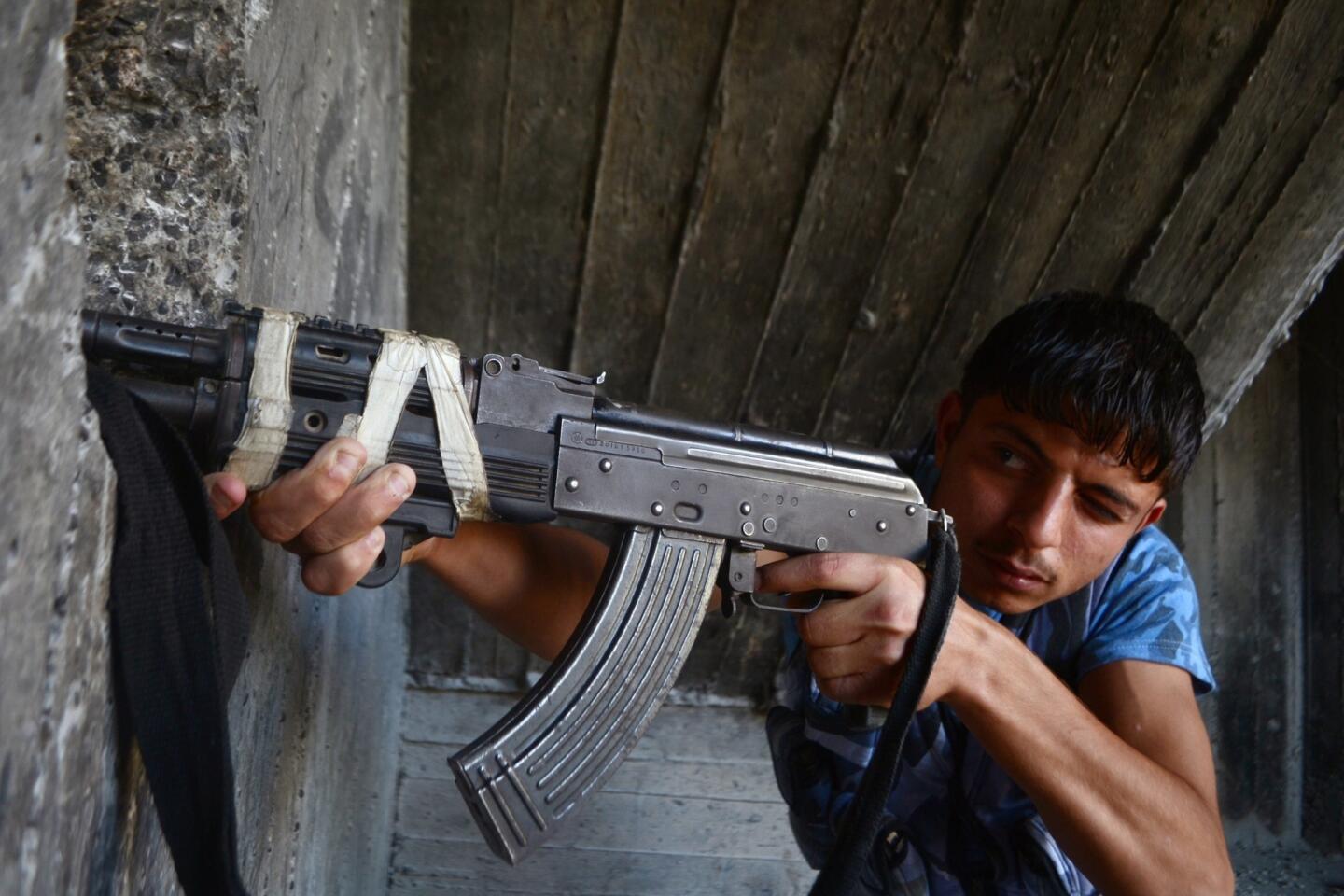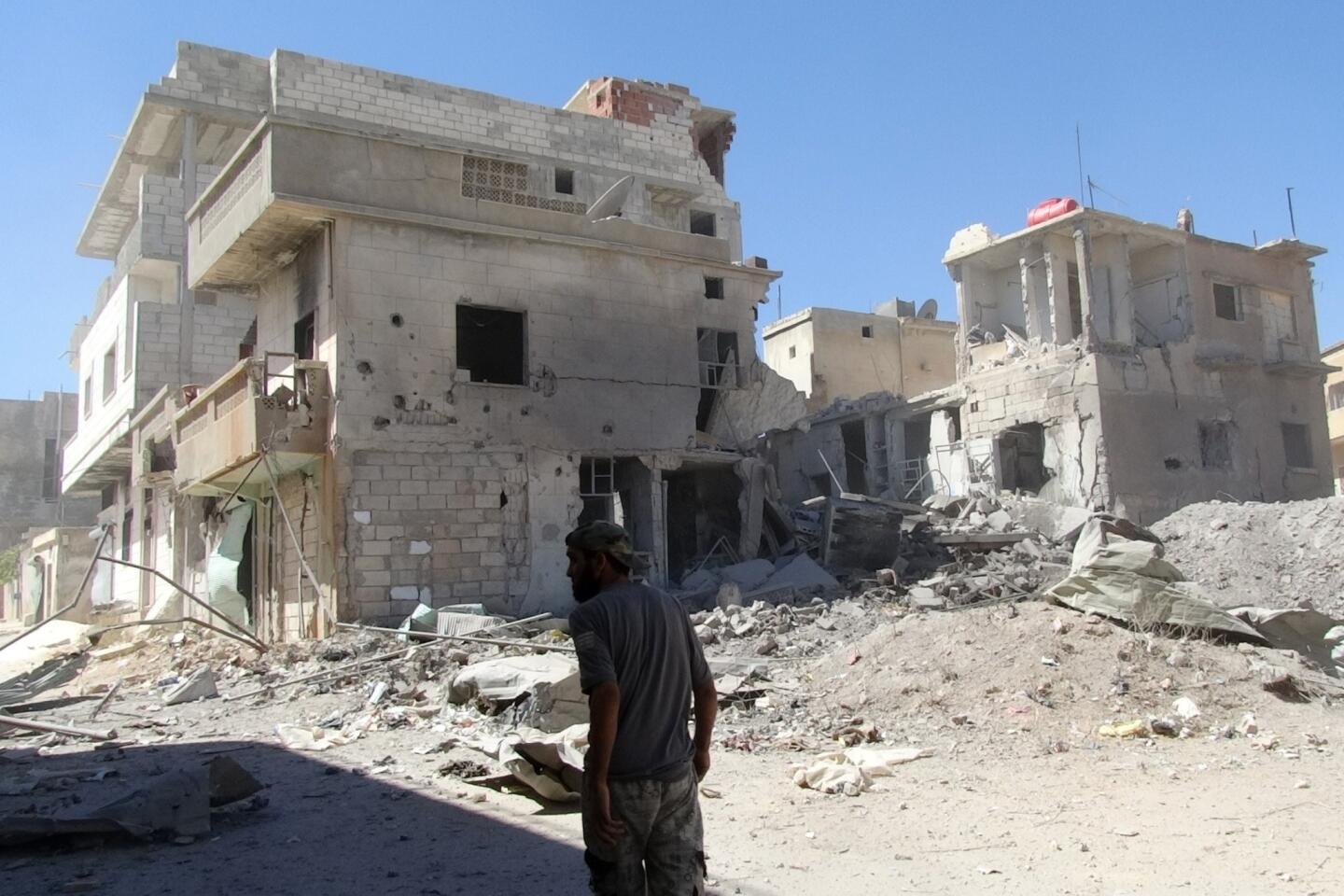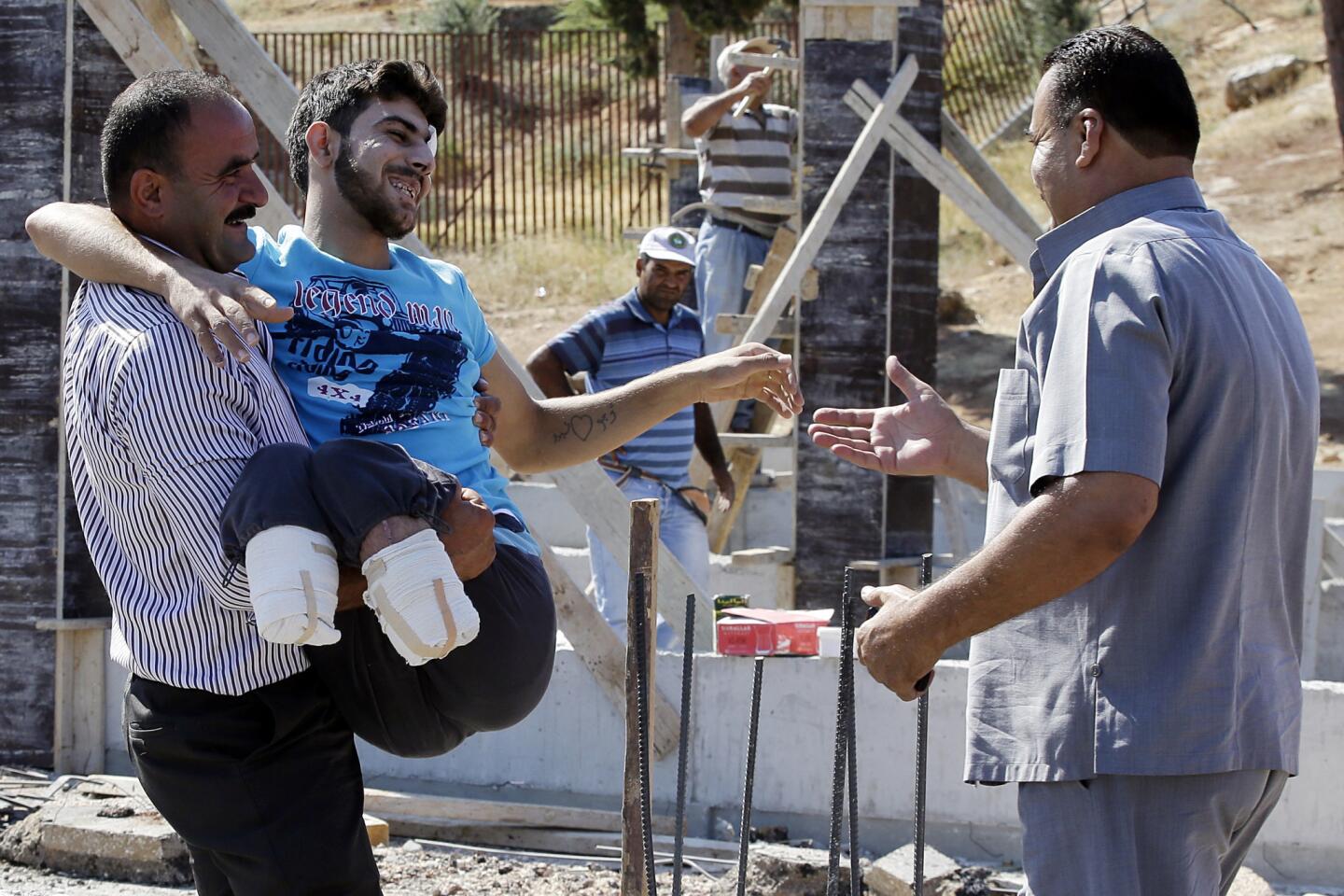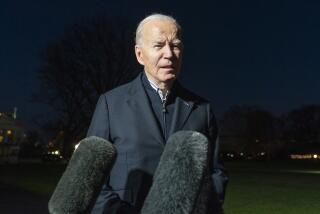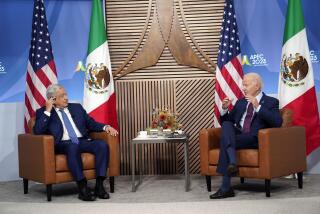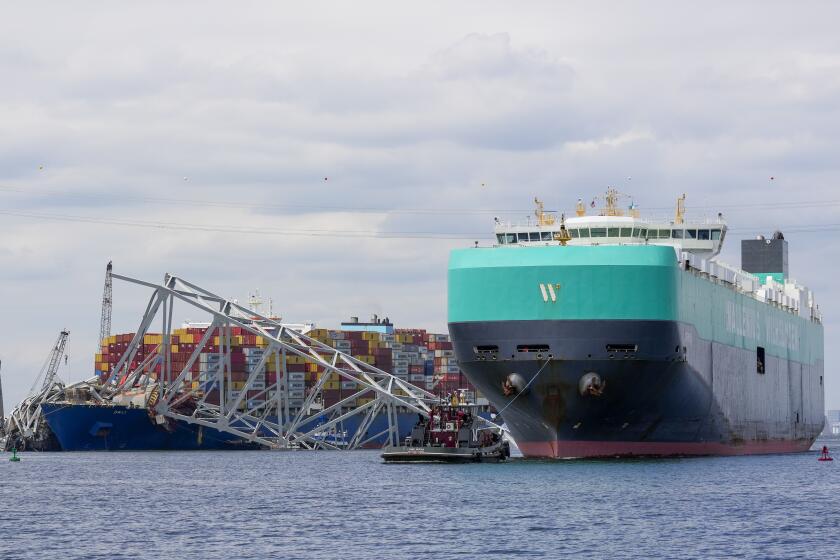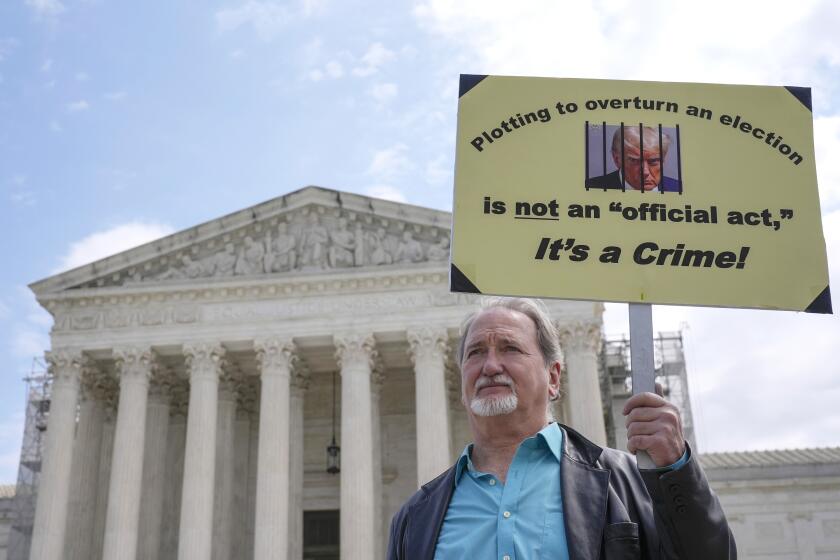U.S. accuses Syria of stalling on chemical weapons surrender
WASHINGTON — Amid growing U.S. fear that the Syrian civil war is now a magnet for extremist groups, the Obama administration on Thursday accused President Bashar Assad’s government of stalling on the destruction of its most dangerous chemical agents and said the ambitious operation may now be at risk.
The warning comes two days after President Obama hailed the disarmament effort as a foreign policy success in his State of the Union speech, saying American diplomacy, backed by the threat of force, “is why Syria’s chemical weapons are being eliminated.”
The U.S. allegation that Damascus is deliberately holding back on destroying its chemical arsenal comes as an initial round of Syrian peace talks in Geneva is scheduled to end Friday without any progress toward resolving Syria’s almost 3-year-old war. Secretary of State John F. Kerry and other U.S. diplomats have repeatedly accused Assad’s government of lying, impeding humanitarian aid and rejecting any transfer of power to a caretaker administration.
The chemical accord was not on the agenda in Geneva, but U.S. officials and their allies have long worried that Assad might delay implementation of it to extend his tenure. Final destruction of his chemical arsenal could reduce his utility to both the United States and Russia, analysts say, providing Assad with an incentive to slow down the process.
On Thursday, Robert P. Mikulak, the U.S. ambassador to the international organization that is overseeing the collection and destruction of the Syrian arsenal, accused Damascus of missing deadlines and “open-ended delaying” of the surrender of hundreds of tons of lethal blister and nerve agents.
The program “has seriously languished and stalled,” Mikulak told the executive council of the Organization for the Prohibition of Chemical Weapons in The Hague, which is coordinating the operation with the United Nations. The delays “could ultimately jeopardize the … removal and destruction effort.”
U.N. Secretary-General Ban Ki-moon this week called on Syria to step up its efforts. But Ban and OPCW officials have limited their criticism of Assad, and the group’s executive council did not formally respond to Mikulak.
Assad agreed in September to surrender his poison gas stockpiles, and the equipment used to produce them, to international authorities in a deal brokered by Russia, a close ally. On Wednesday, Kerry urged Russian Foreign Minister Sergei Lavrov to use his influence to persuade the Syrians to cooperate.
Under the deal, Damascus agreed to deliver 700 tons of its most dangerous “Priority 1” chemicals by next Wednesday to the Mediterranean port of Latakia, where the material would be loaded onto ships and later destroyed at sea. But Syria has delivered less than 5% of its chemical weapons, including its less dangerous “Priority 2” chemicals, which are also due next week.
Production equipment and facilities, as well as industrial chemicals used in the process, are supposed to be destroyed by June 30. But U.S. officials say Syria now is proposing only to “inactivate” the facilities, which include seven hardened hangars and five underground bunkers, by welding doors shut and building interior obstacles.
Syrian authorities say they need armored shipping containers and other equipment to protect the chemical agents as they are trucked to Latakia in the middle of a civil war. Major routes are vulnerable to rebel ambushes, and the main highway north from Damascus passes through an opposition stronghold and a rebel-held town.
Mikulak countered that Syrian forces had repeatedly moved their stockpiles since the conflict began in 2011 without armored trucks or other specialized equipment. The Syrian demands “display a bargaining mentality rather than a security mentality,” he said.
Obama threatened to launch punitive missile strikes against Syria in August, saying Assad’s government had used poison gas against civilians in a rebel stronghold near Damascus, but it backed off when Syria agreed to give up its chemical weapons.
U.S. officials said Thursday that the military option was still viable, though they played it down.
“We’ve never taken the option as it relates to Syria off the table,” said Jen Psaki, a State Department spokeswoman. “But obviously, what we’re pursuing now is the diplomatic path.”
Gary Samore, a former arms control advisor to Obama, said Assad might recognize that, so long as the disarmament process lasts, the administration needs him and thus is constrained in how much it can help the rebels fighting to oust him.
“The closer we get to the end game, the more incentive he has to stretch it out,” said Samore, executive director of research at the Belfer Center for Science and International Affairs at Harvard’s Kennedy School of Government.
The disarmament program was authorized by a U.N. Security Council resolution. And if Syria continues to fail to meet its pledges, the OPCW could in theory take the issue to the council for enforcement.
But Samore said he doubted that route would lead to action because council members Russia and China would oppose any resolution that might be used to authorize the use of force against Syria.
Instead, Samore said, new threats of American strikes might be needed to move the Syrians. “It may be that’s what it takes to break the logjam,” he said.
U.S. intelligence officials who testified to Congress this week appeared chiefly worried about the hundreds of rebel factions operating in Syria, including some with ties to Al Qaeda. Officials said more than 7,000 foreign fighters had arrived in Syria from about 50 countries.
“We’re seeing now the appearance of training complexes in Syria to train people to go back to their countries and conduct more terrorist attacks,” James Clapper, the director of national intelligence, told the Senate Intelligence Committee. “This is a huge concern to all of us.”
The U.N. estimates that 9.3 million Syrians are in need of humanitarian assistance and that nearly 10% of the population has taken refuge outside the country. More than 100,000 people are said to have died in the conflict.
Richter reported from Washington and McDonnell from Beirut.
More to Read
Start your day right
Sign up for Essential California for news, features and recommendations from the L.A. Times and beyond in your inbox six days a week.
You may occasionally receive promotional content from the Los Angeles Times.
